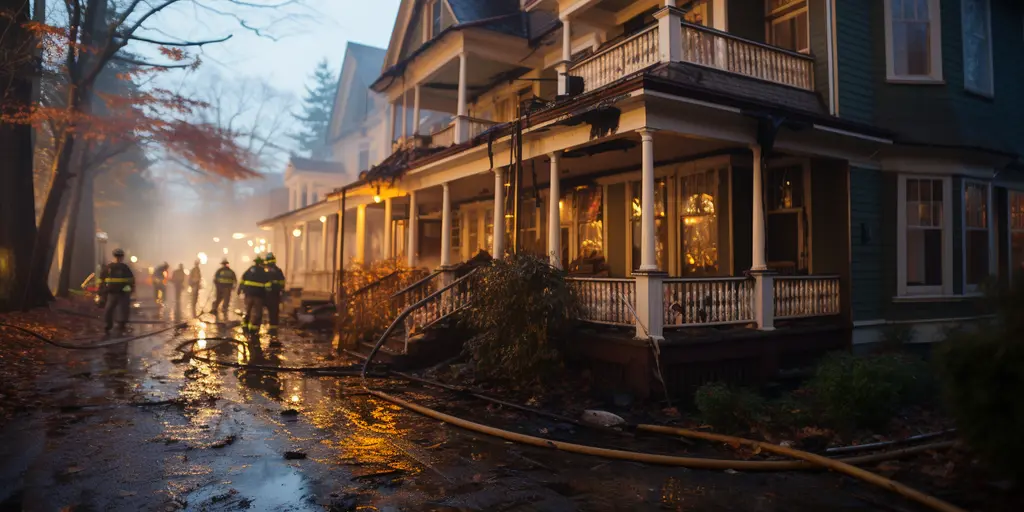The smart Trick of Dry Star Restoration That Nobody is Talking About
Table of ContentsThe Only Guide to Dry Star RestorationAll about Dry Star RestorationAbout Dry Star RestorationThe smart Trick of Dry Star Restoration That Nobody is Talking AboutThe 20-Second Trick For Dry Star Restoration
Specifically in winter season, home heating units are a typical fire threat. Defective circuitry or placing heating units also close to flammable materials like drapes can stir up a fire.
Products like motor oil or cleaning fluids can spark under certain conditions. Always shop these products correctly and far from heat sources. fire damage restoration companies. Data: According to the National Fire Defense Association, household chemicals are liable for a significant percentage of home fires yearly. By understanding these common reasons, you can take steps to make your home more secure.
The Best Strategy To Use For Dry Star Restoration

Secret concerns include: Water Intrusion: Water can seep into walls, floors, and furniture. This can damage the structural integrity of your home. Form Growth: If water is moist rapidly, mold and mildew can begin to expand within 24-48 hours. Mold can create health and wellness issues and additional damage to your property. Architectural Weakening: Water can deteriorate wood structures and trigger metal parts to corrosion, making your home risky.
It's vital to address all these elements to totally restore your home. Next, we will certainly dive right into the steps included in the fire damages restoration process. Fire reconstruction is the process of cleaning, repairing, and recovering a residential or commercial property that has actually been harmed by fire. The goal is to return the home to its pre-loss condition, suggesting it looks and functions as it did before the fire.
Dry Star Restoration Things To Know Before You Get This
Particles Removal and Demolition: Harmed materials are securely removed, and any type of hazardous compounds like asbestos are handled appropriately. Fire damage encompasses numerous kinds of harm to a building: Physical Damage: This consists of charring, smudging, and disintegration of products straight affected by the fire.
Water Damages: Water made use of to extinguish the fire can cause architectural weakening and mold development otherwise correctly taken care of. Fire restoration experts make use of specialized techniques and devices to resolve all these sorts of damage, making sure the residential or commercial property is risk-free and comfortable once again. Next, we will dive right into the actions associated with the fire damage remediation process.
From advanced water removal tools to specialized devices for smoke and soot removal, we have the resources required to restore your home to its pre-loss problem. Our methods are created to be thorough and efficient, reducing further damage and speeding up the healing process. Our team consists of certified service technicians that are professionals in fire damage repair.
The Ultimate Guide To Dry Star Restoration
Their know-how makes sure that every job is done right, supplying you with peace of mind throughout a difficult time. If you require fire damage repair services, don't wait to contact us. We're below to help you restore your home and your life after the fire. Last modified on 15th of July 2024.
(https://ameblo.jp/dryst4rrstrtn/entry-12879231891.html)If there's a fire, smoke makes sure to comply with. While the fire's smoke is composed of components that make your home risky to be in, the damage smoke leaves doesn't quit there. Smoke will certainly float to apparently every part of your home, sticking to furnishings, design, drapes, wall surfaces, ceilings, floorings, and much more.
The water will certainly soak right into the her explanation charred products and spread to various other areas of the home untouched by the fire. If left unattended or missed out on during fire damages remediation, the water damages will only get worse with time and can result in mold and mildew growth, safety and security problems for your home's framework, and unpleasant looks around your space, consisting of warped floor covering, peeling off paint, and visible discolorations.
The Ultimate Guide To Dry Star Restoration
Water mitigation is typically the initial action of the fire, smoke, and water damage reconstruction procedure after a damage control has been finished. This resolves the water damages head-on and includes steps to avoid additional issues for your room prior to, throughout, and after restoration. Inspection and damage assessment to evaluate the level of water damageIsolation of water damage to impacted locations to forbid water from infecting completely dry areasInspection of your home's structure for architectural stabilityExtraction of any kind of standing water from the propertyStructural drying out with commercial-grade equipmentSite cleaning that will certainly eliminate particles, pack out salvageable material for repair, and give way for restoration servicesWe'll likewise complete extra damage mitigation by boarding up busted home windows and doors, using tarps to holes in roofing systems, and completing other actions to protect against added damages and dangers to your home while the repair services are happening.
Many terms and summaries utilized by water and fire damage remediation specialists are rather self-explanatory. This can consist of utilizing solvents or chemicals as additives or obstacles on building products to prevent fungi growth.